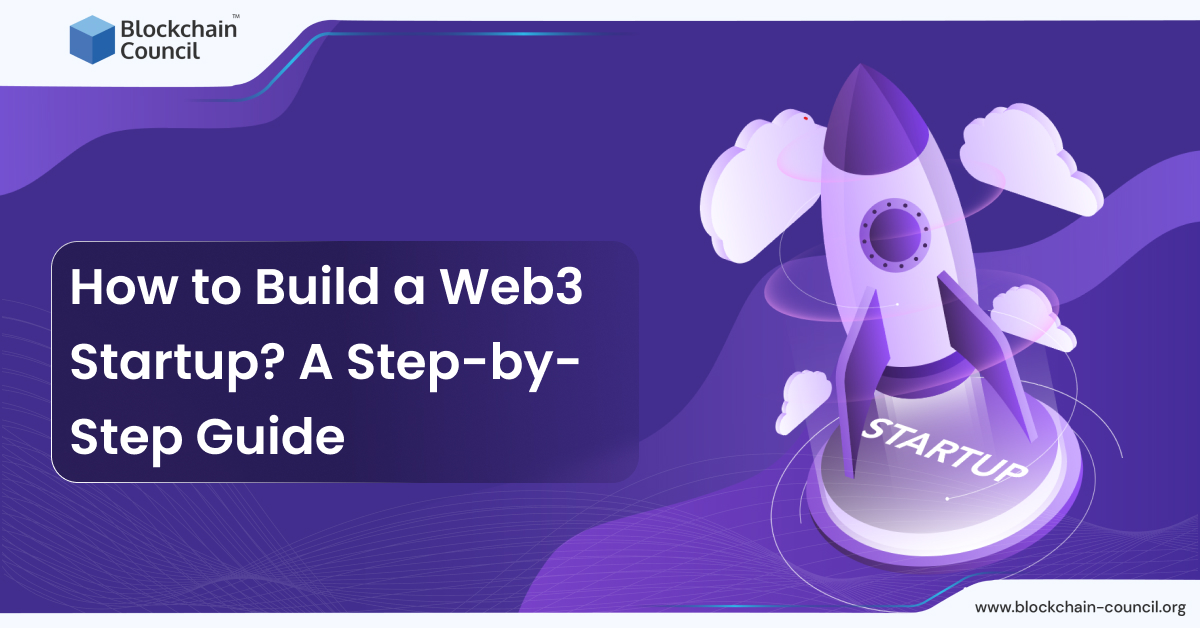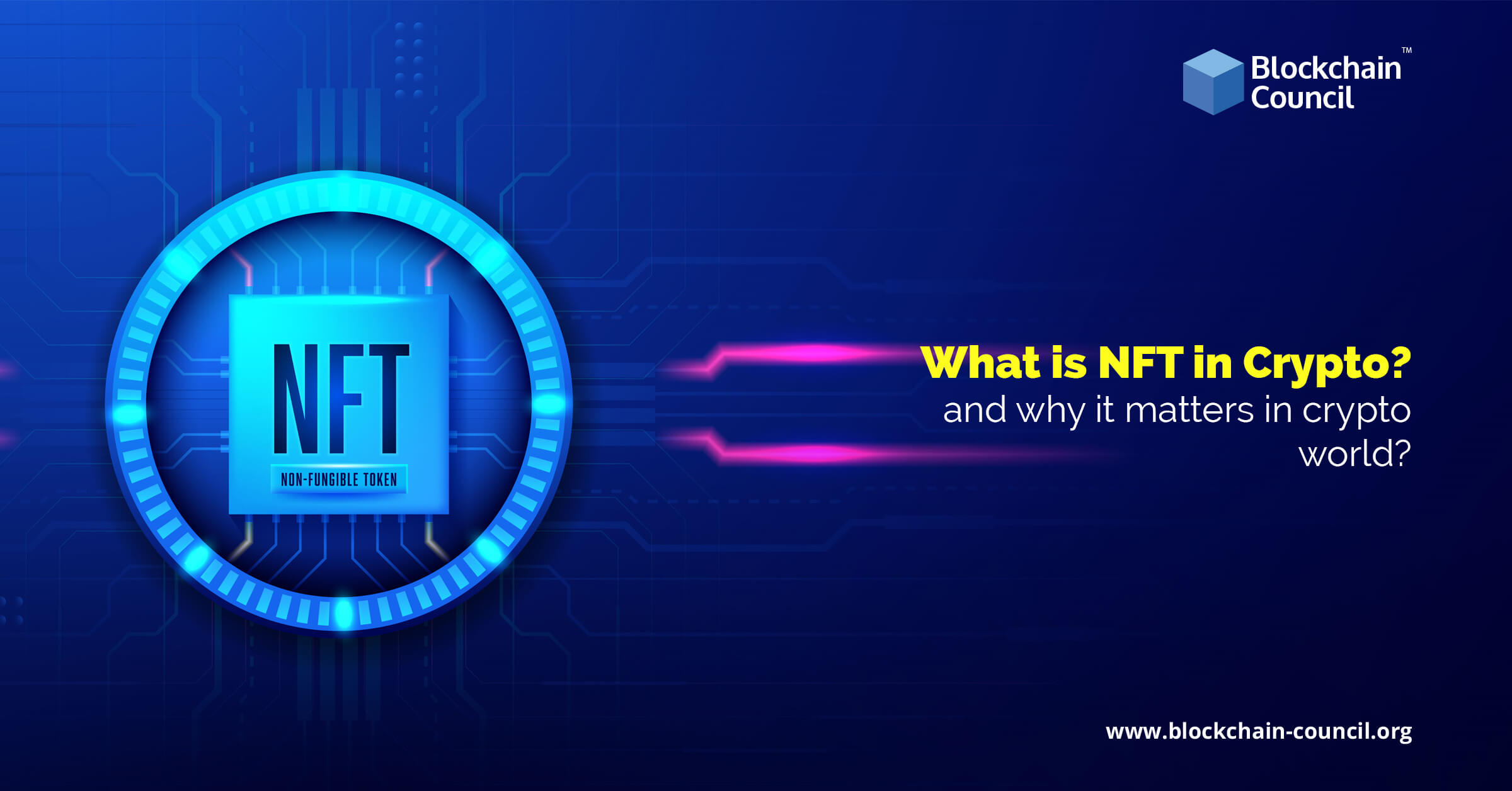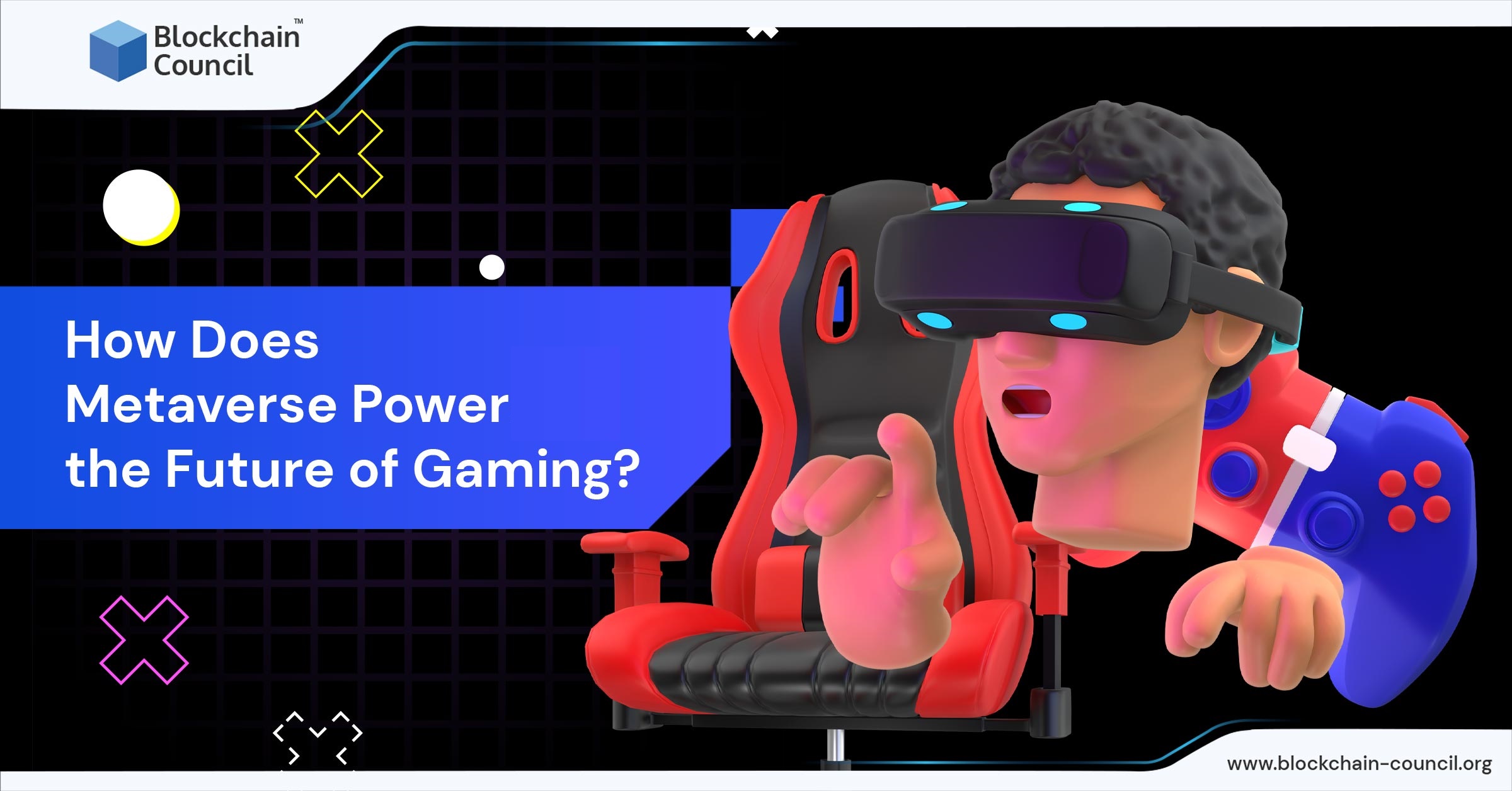
- Blockchain Council
- September 13, 2024
Summary
- Starting a Web3 startup involves understanding Blockchain basics and navigating decentralized finance (DeFi).
- Blockchain technology, evolving into Blockchain 4.0, is crucial for secure transactions, especially in the Metaverse with NFTs.
- Cryptocurrencies, like Bitcoin and Ether, play a fundamental role in Web3, with over 400 million global crypto asset owners.
- Smart contracts, self-executing code agreements, are pivotal for trustless transactions and innovations like zero-knowledge rollups.
- Emerging trends include real-world asset tokenization, Blockchain interoperability, and integration in sectors beyond finance.
- Market analysis reveals a growing Web3 landscape, dominated by public Blockchains, with key trends in enterprise tokenization and metaverse convergence.
- Successful Web3 startups, like Aptos and ConsenSys, showcase diverse applications of Blockchain, from e-commerce to decentralized storage.
- Web3 startup development involves understanding the regulatory landscape, ideation, market research, and strategic planning.
- Technical foundations include a deep understanding of Web3 principles, user-centric product development, and community engagement.
- Scaling a Web3 startup requires a strong value proposition, community building, strategic partnerships, and adaptability to evolving trends.
Starting a startup in the Web3 space can be a daunting task, but with the right guidance, it becomes an exciting journey into the decentralized and interconnected world of Blockchain and cryptocurrencies. In this step-by-step guide, we’ll break down the essential elements and actions you need to take to launch your own Web3 startup successfully. From understanding the basics of Blockchain to navigating the intricacies of decentralized finance (DeFi), this article aims to provide a practical roadmap for aspiring entrepreneurs venturing into the dynamic realm of Web3.
Understanding the Basics of Blockchain and Cryptocurrencies
Overview of Blockchain Technology
Blockchain technology has evolved significantly and is at the core of Web3 innovation. It’s a decentralized ledger that records transactions across a network of computers, offering enhanced security and transparency. The latest advancements in Blockchain include the development of Blockchain 4.0, which focuses on speed, user experience, and broader usability. This new phase in Blockchain technology is instrumental in driving innovations in various sectors, including the Metaverse, where it’s used for secure transactions and proving asset ownership, especially with NFTs (Non-Fungible Tokens).
Role of Cryptocurrencies in Web3
Cryptocurrencies, like Bitcoin and Ether, are the most recognized applications of Blockchain technology. They play a fundamental role in Web3, serving as a means of transaction and investment. 2023 has seen a growing interest in tokenization, especially with real-world assets, leading to an increased adoption of cryptocurrencies globally. Despite some regulatory challenges and market volatility, the adoption of cryptocurrencies continues to expand, with more than 400 million people worldwide owning crypto assets.
Introduction to Smart Contracts
Smart contracts are self-executing contracts with the terms of the agreement directly written into lines of code. They are a pivotal aspect of Blockchain technology, enabling automated, trustless transactions without the need for intermediaries. Recent developments in this area include the advancement of zero-knowledge rollups and more interconnected Blockchains, enhancing the efficiency and interoperability of Blockchain networks. These innovations are significant for Web3, as they allow for seamless interactions across different Blockchain platforms and the integration of real-world assets into the digital economy.
Emerging Trends and Developments
- Real-World Asset Tokenization: The tokenization of assets like real estate and gold is gaining traction. This process involves converting rights to an asset into a digital token on a Blockchain.
- Blockchain Interoperability: There’s a growing focus on enabling different Blockchain networks to communicate and share information seamlessly, which is crucial for the widespread adoption of Blockchain technology.
- Blockchain and Social Media: Blockchain technology is being explored to address issues like privacy violations and data control in social media, ensuring that user data remains secure and empowering content creators.
- Integration in Various Sectors: Beyond finance, Blockchain is being integrated into government agencies and the IoT (Internet of Things), providing enhanced security and efficiency.
- Blockchain with AI: The convergence of Blockchain technology and AI is anticipated to drive further advancements and applications, reshaping how we interact with technology.
Market Analysis and Opportunity Identification
Understanding the Current Web3 Landscape
The Web3 market is rapidly evolving, driven by Blockchain technology and encompassing services like DeFi platforms, NFTs, dApps, and supply chain management solutions. In 2023, the Web 3.0 Blockchain market is expected to continue growing, with North America leading the market and Asia-Pacific as the fastest-growing region. The adoption of 5G and 6G networks is propelling this growth, enhancing Blockchain network performance within the Web 3.0 ecosystem. Public Blockchains dominate this space, offering high security, transparency, and decentralization. The Web3 space is rapidly evolving, with several key trends shaping its future. These include:
- Enterprise Use of Tokenization: Businesses are increasingly adopting tokenization for various applications, like supply chain monitoring and financial cases. Goldman Sachs’ $100 million investment in Blockchain bonds exemplifies this trend.
- Convergence of Simulated and Real Worlds: Technologies underpinning Web3, like the Metaverse, are enhancing human interaction and enabling immersive experiences, paving the way for a new era of digital content ownership.
- Ethical and Trust Frameworks: As Web3 technologies mature, the development of ethical guidelines and trust frameworks will be crucial to foster user confidence and ensure sustainable growth.
- Decentralized Social Networks: The shift towards decentralized social media platforms is notable, offering creators better monetization systems and giving users more control over content.
Identifying Niches and Opportunities in the Web3 Space
The public Blockchain segment, which allows unrestricted global participation, dominates the Web 3.0 Blockchain market. However, significant growth is anticipated in hybrid Blockchains that offer a mix of permission-based and permissionless systems. Cryptocurrency remains a key application area, but smart contracts are expected to see considerable growth. The BFSI sector is a major end-user of Web 3.0 Blockchain, leveraging it for scalability, transaction speed, and cost reduction. Retail and e-commerce are emerging as fast-growing sectors within Web3, benefiting from distributed ledger technology.
To identify opportunities, consider these aspects:
- Popularity of Cryptocurrencies: The growing acceptance of cryptocurrencies is a significant factor. For instance, a survey indicated that 54% of participants want more companies to accept cryptocurrencies, highlighting their potential to replace traditional paper money.
- Adoption Among Younger Generations: Younger demographics are increasingly embracing Web3 technologies, with Gen Z and millennials showing particular interest in working in the Metaverse and investing in cryptocurrencies.
- Emerging Business Models: Look at how businesses are leveraging Web3 technologies for innovative models. For instance, NFTs are being used beyond digital art and collectibles to offer real utility in areas like loyalty programs, gaming, and DeFi.
Case Studies of Successful Web3 Startups
Highlighting successful startups can provide insights into the Web3 market’s potential. For instance, Aptos, a leading Web3 developer, achieved a valuation of $1 billion in 2022, with expectations of significant growth in the coming years. ConsenSys, focusing on Ethereum ecosystem services and applications, reached a peak value of $7 billion. In the U.S., government investments in Web3 are substantial, with states like California, Wyoming, and Florida fostering Web3 development. NASA and the U.S. Army are also notable investors in this technology.
The success of Web3 startups is a testament to the diverse applications of Blockchain and decentralized technologies. These companies have strategically leveraged the potential of Web3 to transform various industries. Let’s delve into some notable examples that showcase the versatility and innovation within the Web3 landscape:
- Charles & Keith: This renowned retailer has embraced the digital revolution by integrating cryptocurrencies like Bitcoin and Ethereum into its e-commerce platform. Their foray into the metaverse during Decentraland’s Metaverse Fashion Week exemplifies the power of brand storytelling in novel digital environments.
- NIVEA: In a bold move, the skincare brand launched a campaign featuring 15,000 free-to-mint NFTs. By educating users about Web3 and making these NFTs freely accessible, NIVEA not only entered the world of Blockchain but also effectively engaged its customer base in an exciting digital journey.
- Decentraland: Built on the Ethereum Blockchain, Decentraland is a virtual world where users can trade digital assets, showcasing the potential of Blockchain in creating vibrant virtual economies.
- SuperRare: This digital art marketplace on the Ethereum Blockchain has revolutionized art sales and ownership, highlighting how Blockchain technology can reshape the art industry.
- Arweave: As a decentralized storage network, Arweave provides permanent, tamper-proof data storage, underscoring Blockchain’s significance in ensuring data security and integrity.
- Chainlink: Functioning as a decentralized oracle network, Chainlink connects smart contracts to real-world data, demonstrating the crucial role of Blockchain in bridging the digital and physical worlds.
- Virgin Mobile: Through the use of decentralized data platforms, Virgin Mobile developed innovative services for mobile users in Latin America, showcasing Blockchain’s utility in the telecommunications sector.
- Stratos Fiduciary Services: This multinational company streamlined cross-border transactions using Blockchain, illustrating the profound impact of Blockchain technology in the financial sector.
- Babieka Films: Launching a Web3 venture, Babieka Films connects creative content makers with their audience, showcasing Blockchain’s potential in the entertainment industry.
- Music Bonds: This startup pioneers NFT platforms for the music community, reshaping the way artists connect with their fans through Blockchain technology.
- Fluree: Based in the United States, Fluree offers an immutable Web3 data platform, transforming industries like logistics and insurance by enhancing data integrity and transparency.
- Internxt: A Spanish startup providing decentralized cloud storage with a focus on security and privacy, highlighting Blockchain’s utility in data storage.
- Ocean Protocol: A Singaporean DAO offering a compute-to-data solution in a decentralized data marketplace, showcasing Blockchain’s role in data monetization and control.
- Band Protocol: This Thai startup offers decentralized oracle services, demonstrating how Blockchain can provide trusted real-world data sources for decentralized applications (dApps).
- Crust Network: A Chinese startup providing decentralized storage for the metaverse, emphasizing Blockchain’s role in developing decentralized digital worlds.
Keeping Up with Regulatory Changes
An important aspect of Web3 is the evolving regulatory landscape. In the U.S., states like Wyoming and California are developing Web3-friendly legislation, offering incentives for businesses. Globally, Dubai is positioning itself as a hub for Web3 innovation. These developments suggest a trend towards more regulatory clarity and support for Web3 businesses.
Developing a Web3 Startup Idea
Developing a Web3 startup idea involves several key steps to ensure that your project is viable, unique, and meets a genuine market need. Here’s a comprehensive guide based on the latest industry insights:
Ideation and Conceptualizing a Web3 Project
- Understanding the Web3 Ecosystem: Familiarize yourself with the Web3 ecosystem, including its key players, trends, and challenges. Engage with industry publications, conferences, and online communities for a thorough understanding.
- Identifying Pain Points and Potential Solutions: Focus on pain points within your target sector. What issues are potential users facing that your Web3 project could address? Think about how Web3’s unique capabilities, like decentralization, can provide innovative solutions.
- Market Research and Idea Validation: Before diving into the development, conduct thorough market research. This includes understanding your target audience, analyzing competitors, and staying updated with industry trends. Validate your idea by engaging with potential users or experts in the field. This ensures that your project is not just innovative but also addresses a real market need.
- Strategy Formation: Develop a strategy based on in-depth research and data-driven decisions. This helps in minimizing risks, optimizing resource allocation, and enhancing the overall quality of your Web3 solution.
Validating Your Idea
- Market Research and User Feedback: Utilize social media metrics, letters of intent in B2B, or waitlist sizes to gauge market demand. Quick launches followed by continuous user feedback, through interviews or surveys, are crucial for validation.
- Understanding Market Response: If the market shows no interest, seek to understand why through customer interviews. Be willing to pivot your approach if necessary, considering new markets, business models, or product changes.
- Feasibility and Uniqueness: Assess the feasibility of your idea by considering factors like technological requirements, market demand, and regulatory landscape. Also, evaluate how your idea stands out in the market, focusing on its unique selling proposition compared to existing solutions.
- User Persona Creation: Create detailed profiles of your ideal users, including demographics, behavior, goals, and pain points. This will help you tailor your product and communication to your target audience effectively.
Building a Value Proposition for a Web3 Startup
- Define Target Market and User Persona: Clearly define who your product is for. Create detailed user personas, including demographics, behavior, and pain points, to better understand and cater to your ideal customer.
- Competitor Analysis and Market Trends: Research competitors and stay up-to-date with trends in the Web3 ecosystem. This helps in understanding your competitive edge and aligning your startup with market movements.
- Revenue Streams and Business Model Development: Identify how your startup will generate revenue and outline your business strategy. This includes user acquisition and retention strategies as well as differentiation from competitors.
- Financial Planning and Projections: Develop a financial model that projects future revenue and expenses. Consider initial development costs and long-term financial sustainability.
- Developing a Business Plan: Outline your mission, vision, and specific goals. For instance, if your startup focuses on a crypto investment platform, your mission might be to democratize access to digital trading. Also, define your monetization strategy, whether it’s through subscription fees, transaction fees, or other innovative methods.
- Building a Competent Team: Identify the skills required for your startup, such as Blockchain developers, marketing specialists, and UI/UX designers. Creating a diverse team brings unique perspectives and innovative ideas to the table.
- Securing Funding and Resources: Research various funding sources, such as VCs, angel investors, or crowdfunding. Create a compelling pitch deck that highlights the potential of your Web3 venture.
- Developing an MVP: Build a Minimum Viable Product (MVP) based on user feedback and market research. Test the MVP with a small group of users, iterate based on feedback, and refine your product accordingly.
- Community Building and Engagement: In the Web3 world, building a strong community is essential. Engage with potential users and supporters through social media, your website, and other online platforms to build trust and support for your startup.
Tips from Industry Experts
- Focus on Product Development: Spend considerable time developing your product to ensure it adds real value and stands out in the market.
- Timing and Market Demand: Assess the right time to launch your product and whether it meets a current demand or creates new demand.
- Budget and Team Building: Align your budget and team-building strategies with the demands of your target market. Ensure your team is capable of delivering the product efficiently.
Qualities of a Successful Entrepreneur in Web3
- Strong Team and Partnerships: Building a strong team is essential. Collaborate with individuals who bring diverse skills and perspectives to your project.
- Focus and Discipline: Choose a specific vertical and stay focused on your goals. Avoid spreading resources too thin across multiple initiatives.
- Realism and Responsiveness: Be realistic in your expectations and responsive to market changes and feedback. Flexibility and adaptability are key in the rapidly evolving Web3 space.
By following these guidelines, you can develop a strong foundation for your Web3 startup. The focus should be on identifying a real problem, creating a unique solution with Web3 technology, and validating this solution with your target market. This approach, combined with a well-thought-out business strategy and a strong team, will increase the chances of success in the Web3 ecosystem.
Technical Foundations for a Web3 Startup
Developing a Web3 startup requires a focus on product development and user experience, ensuring the creation of innovative, user-centric products that thrive in the decentralized digital landscape. Here’s a comprehensive approach to developing your Web3 product:
Best Practices for Web3 Product Development
- Deep Understanding of Web3 Principles: A solid grasp of decentralized technologies, such as Blockchain, smart contracts, DeFi, and NFTs, is essential. This foundational knowledge informs effective product management in the Web3 ecosystem.
- Strategic Product Strategy and Vision: Conduct thorough market research to identify user needs and pain points, and align your product roadmap with the overall goals of your project or organization.
- Seamless and Intuitive User Experience: Collaborate with design teams to create user interfaces that integrate smoothly with Blockchain technology. Address challenges like wallet management and transaction transparency.
- Community Engagement: Play an active role in building and nurturing communities around your products. Engage with users and stakeholders through channels like Discord, Telegram, or forums, gathering feedback and establishing a loyal user base.
- Focus on Partnerships and Ecosystem Development: Seek strategic collaborations that enhance your product’s value proposition and contribute to the broader Web3 ecosystem’s growth.
- Adaptability and Continuous Learning: Stay updated on the latest advancements, industry standards, and best practices in Web3. Adapt strategies and product roadmaps to keep pace with the dynamic landscape.
Focusing on User Experience and Interface
- Design for Clarity and Ease of Use: Ensure that your product’s design is intuitive and user-friendly. Implement conversational summaries in documentation and use pop-up glossaries for technical terms to aid understanding.
- Communicate Exchange Rates Clearly: Show price conversions from cryptocurrencies to native currencies in a simplified manner to help users understand the value of transactions.
- Enhance Wallet and Transaction Readability: Make wallet addresses and transaction hashes easily readable, and incorporate additional verification steps to reduce errors in transactions.
- Clarify Transaction Waiting Times: Provide clear updates on transaction status to enhance user comfort and confidence. This could be through text, animations, or links to block explorers like Etherscan.
- Implement a “Send Max” Button: Introduce features for easier transaction processes, like a “Send Max” button, to allow users to transfer their entire wallet balance conveniently.
- Educate Users About Gas Prices: Clearly explain the concept of gas prices and their impact on transactions. Show gas prices in familiar fiat currencies to help users understand the costs involved.
Beta Testing and User Feedback Collection
- Engage Early Adopters in Testing: Utilize the feedback from early users to refine and improve your product. This approach allows you to address real user needs and enhance the overall user experience.
- Iterate Based on Feedback: Use the insights gathered from beta testing to make informed adjustments and enhancements to your product.
- Encourage Community Involvement: Foster a sense of community by involving users in the testing process. This not only improves the product but also builds a loyal user base.
- Utilize Data Tools and Audits: Implement Web3 data tools for reading, storing, and transforming Blockchain data. Regular security audits can help identify vulnerabilities and code issues, contributing to a more secure and reliable product.
How to Scale Your Web3 Startup?
Scaling your Web3 startup involves a multi-faceted approach, focusing on building a strong value proposition, fostering community engagement, and embracing innovation, among other strategies.
Strategies for Growth and Scaling
Develop a Strong Value Proposition
Understand your target market and competition to craft a compelling value proposition that clearly communicates the unique benefits of your product or service. For instance, Chainlink’s value proposition emphasizes its role as a leading decentralized oracle network.
Build a Strong Team
Assemble a team with the right skills, experience, and mindset. Look for individuals who are passionate about your mission and have relevant experience in Web3 technologies.
Focus on Customer Acquisition
Develop a targeted, efficient, and scalable customer acquisition strategy. Utilize data and analytics to understand your target market’s behavior and the effectiveness of your marketing channels.
Foster Community Engagement
Engage with your community to build a strong brand identity and encourage participation in product development and decision-making. Regular community calls, forums, and hackathons can be effective in building a loyal user base.
Partnerships and Collaborations in the Web3 Ecosystem
Leveraging Influencer Marketing and Strategic Partnerships
Collaborate with influencers and form partnerships with other Web3 projects to increase visibility and credibility. Joint marketing campaigns, product integrations, and collaborative events can be powerful tools for reaching a larger audience.
Community Building and User Retention
Building a strong community is essential for user retention. Encourage your users to take an active role in your platform and offer rewards for engagement. This approach not only drives growth but also helps in retaining users.
Preparing for and Managing Rapid Growth
- Embrace Innovation and Adaptability: The Web3 ecosystem is constantly evolving. Be willing to adapt to new technologies and business models, and maintain a culture of experimentation and risk-taking.
- Understanding and Overcoming Barriers: Tackle challenges such as managing gas fees, controlling decentralization, and ensuring interoperability. Utilize open-source platforms and technology-agnostic approaches to build scalable and adaptable Web3 applications.
- Tokenomics and Regulatory Compliance: Ensure your token has clear utility and value in your ecosystem and stay updated with global crypto regulatory trends. Avoid common mistakes like not setting aside tokens for community incentives or having an unclear token distribution plan.
- Leveraging Airdrops for User Acquisition: Airdrops can be a powerful tool for marketing promotions and community engagement. However, they should be used judiciously as part of a broader growth strategy and not as a sole means to achieve product-market fit.
Upcoming Trends in Web3 and Blockchain
Modular Blockchain Architectures
There’s a growing focus on modular Blockchains, which offer more efficient and scalable architectures compared to traditional monolithic Blockchains. This approach facilitates higher transaction throughput, lower infrastructure costs, and paves the way for more innovative dApps in the Web3 ecosystem.
Ethereum Layer 2 Developments
Ethereum’s Layer 2 solutions are advancing towards greater decentralization and full EVM equivalence. This progression is crucial for enhancing scalability and efficiency while maintaining robust security features.
Increasing Enterprise Tokenization
Enterprises are increasingly adopting tokenization for use cases like supply chain monitoring and financial services. This trend is expected to move from experimental to routine implementation, with large companies like Goldman Sachs investing in Blockchain bonds.
Convergence of Real and Virtual Worlds
The intersection of the metaverse with Web3 technologies is expanding the potential for social networks where individuals can create and own their digital content, as opposed to centralized ownership in Web2.
Focus on Privacy and Security
The Web3 sector is expected to see increased investment in security, with companies developing solutions to enhance privacy and data control for users.
Blockchain in Supply Chain Management
Blockchain is becoming an important tool for tracking and verifying the movement of goods, offering a secure, tamper-proof, and transparent record, which is beneficial for environmentally and socially conscious consumers.
Smart Contracts and AI Integration
The integration of AI with Blockchain, particularly in smart contracts, is a growing trend. AI can enhance the potential of Blockchain, and vice versa, Blockchain can bring transparency to AI processes.
Importance of Staying Updated and Continuous Learning
- Rapid Technological Advancements: The field of Web3 is rapidly evolving, with new technologies, frameworks, and applications emerging regularly. Staying updated is crucial for entrepreneurs to remain competitive and innovative.
- Adapting to Market Changes: As the market and user preferences change, startups need to adapt their strategies and offerings to meet these new demands and opportunities.
Resources for Keeping Abreast of Web3 Advancements
- Online Courses and Webinars: Platforms like the Blockchain Council offer courses on Blockchain technology, smart contracts, and decentralized applications.
- Industry Blogs and Newsletters: Follow reputable sources in the Blockchain and Web3 space like the Blockchain Council for the latest news, trends, and insights. We regularly publish informative articles.
- Community Engagement: Participate in online forums, social media groups, and community events to exchange ideas and stay informed about the latest developments in the industry.
- Professional Networks and Conferences: Attending industry conferences and networking with other professionals can provide valuable insights and opportunities for collaboration.
Conclusion
Embarking on the path to launch a Web3 startup requires a blend of innovation, adaptability, and a deep understanding of decentralized technologies. As you navigate through the steps outlined in this guide, keep in mind that the Web3 space is ever-evolving. Stay informed about the latest trends, regulations, and technological advancements. Network with the vibrant community in the Blockchain ecosystem, and don’t hesitate to iterate on your ideas based on the feedback and challenges you encounter. With determination and a solid understanding of the Web3 landscape, you’ll be well-positioned to turn your startup vision into a reality.
Frequently Asked Questions
How do I start Web3 on startup?
- Understand Blockchain basics and decentralized finance (DeFi).
- Gain knowledge of evolving Blockchain technologies, including Blockchain 4.0.
- Familiarize yourself with cryptocurrencies, smart contracts, and emerging trends.
- Conduct market analysis to identify opportunities and niches.
- Develop a strong value proposition and business strategy.
- Assemble a competent team with diverse skills.
- Secure funding through various sources like VCs, angel investors, or crowdfunding.
- Build a Minimum Viable Product (MVP) based on user feedback.
- Engage with the Web3 community for support and feedback.
What startups are in the Web3 space?
- Notable Web3 startups include Aptos, ConsenSys, Decentraland, SuperRare, Chainlink, and others.
- Various sectors, such as e-commerce, decentralized storage, virtual worlds, and financial services, have Web3 startups.
Why are there so many Web3 startups?
- Growing interest in Blockchain and cryptocurrencies.
- Advancements in Web3 technologies offer diverse applications.
- Increased adoption of decentralized finance (DeFi) and NFTs.
- Entrepreneurs see opportunities in the evolving Web3 landscape.
- Web3 addresses challenges like data privacy and control in social media.
Is Web3 still growing?
- Yes, Web3 is still growing.
- Market analysis indicates continuous growth in the Web3 space.
- Emerging trends include modular Blockchain architectures, Ethereum Layer 2 developments, and increased enterprise tokenization.
- Ongoing convergence of real and virtual worlds and a focus on privacy and security contribute to the growth of Web3 technologies.



































































 Guides
Guides News
News Blockchain
Blockchain Cryptocurrency
& Digital Assets
Cryptocurrency
& Digital Assets Web3
Web3 Metaverse & NFTs
Metaverse & NFTs
